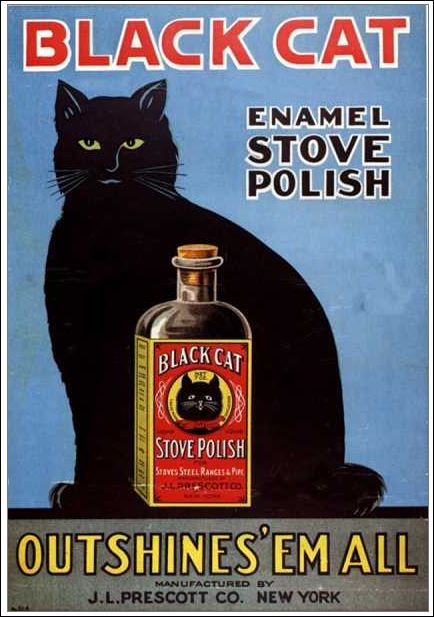
By Luke O’Kelly {grow} Community Member
First I have to tell you that I am upset with myself. For a little over a week, I have been thinking about writing this post, but haven’t gotten around to it, and just a few days ago HubSpot’s Pamela Vaughan posted a blog that is literally the same thing I was planning to write. Dangit! I was so close to being ahead of HubSpot’s blog writing army, only to again fall into their shadow. Anyway, enough lamenting.
I want to introduce you to an idea fittingly dubbed “historical optimization.” The concept is simple: going back and optimizing past your best posts to boost their visibility and lead generation.
This post builds on work by Mark Schaefer and his idea of “content shock” and Pamela Vaughn who wrote a post on historical optimization for HubSpot. I did not come up with either of these concepts, but I am going to show you the link between the two. Both articles have incredible insights — you owe it to yourself to read these for yourself.
Your blog’s secret weapon?
I actually started practicing the concept of historical optimization by accident. For years and years my company’s bloggers were copying and pasting text from Microsoft Word into HubSpot’s blog tool and getting all the punctuation screwed up. I was tasked with going back through and adding punctuation and other optimizations into hundreds of MLT’s blogs. Yes folks, that was a nightmare.
So why not just spend your precious time cranking out new blog posts? The answer is simple: because that’s what everyone else is doing. Over the years, everyone and their mother has jumped on the content marketing band wagon and has started to crank out blog after blog as if their life depended on it.
As Mark Schaefer so cleverly points out in his article Content Shock: Why content marketing is not a sustainable strategy, there is only so much content that people can consume, and thus the more content there is on the web, the harder we will have to work to cut through the noise and get people’s attention. One day, the cost will outweigh the benefit. And already the benefits are shrinking. Simple economics.
According to Forrester, 50% of content from enterprises is not even being used. Some research has determined that on a B2B site, as much as 80 percent of the content is never seen!
Schaefer goes on to say that successful content marketing actually creates content shock for your competitors. If you have tons of quality content in your niche market, it will be nearly impossible for competition to cut through.
The main point of all this is that it is becoming harder and harder to cut through all the online noise. Just like it would be nearly impossible to start a comedy show from scratch that competes with Saturday Night Live, It is becoming nearly impossible to drown out the fire hose of established bloggers by simply creating more content unless you are one of the “Saturday Night Live’s” of the blogging world. If you are just a little old B2B blogger like me, you are going to be blown over by fire hoses like HubSpot. But … there may still be hope for the little guys.
Your best blog posts may be old, but they could also be your secret weapon against B2B Content Shock.
If you’ve been blogging for a while, you have an army at your fingertips: your past posts. Don’t let that army fall down on the job. Give them the tools they need to fight for you. If the quantity of blogs is hard to compete with, try increasing the quality.
Isn’t that why we blog in the first place? To build up relevant content on our websites to help us rank in organic search?
To illustrate the opportunity, here are some stats from my company blog:
- Only 9 percent of MLT’s blog views come from blogs written this month.
- 4 percent of MLT’s posts (25 of them) generate 40 percent of our blog views.
If I could increase the conversion rates on just those 25 posts, I could significantly increase the leads generated by our blog. There are a dozens of things to consider in any successful blog post and it is impossible to get it right every single time. Use that 20-20 hindsight and make sure that you are getting the most out of the hardest-working postsose times you did get it right.
When you create new content, you have to earn people’s attention, when you optimize your content you are making sure that you are taking full advantage of the attention you have already earned.
While historical optimization will have to remain a process for MLT for the time being, HubSpot doubled their leads from their old, updated posts, and increased views from organic search by 106%.
As you go back and scrub up your best posts, here are some best practices to remember:
1) Prioritize
If you try and optimize every single post, it will take forever. Chances are, like MLT and HubSpot, a small percentage of your posts are driving a lot of your traffic. Dig into Google Analytics and see what has been working for you. Can you better optimize at least that small percentage and make them rock?
2) Be patient
If you are a smaller company (like MLT) and can’t put a ton of resources behind optimizing old posts, you may not see a sudden leap in your blog’s productivity, but over time, I am willing to bet that you will see that your blog produces more views and leads than it would have otherwise.
3) Reward your reader
With things evolving so quickly in the B2B marketing world, it doesn’t take long for content to lose relevance. Don’t just correct punctuation or add links. If it got a lot of views at one time, try and figure out how you could update the blog post’s copy, or add to it so that it is just as high value today.
4) What to optimize
Here are eight things to consider when you optimize old posts:
Headline
Make sure your headline clearly reflects the content of your post, and phrases it in a way that people can find it in search.
A bad headline would be “Why MLT Creative Is the Best B2B Marketing Agency In The World.” Obviously this is an extremely prideful and self centered blog (also false), but people who haven’t heard of you would never type your company name into search. A better title would be “The Comprehensive Guide to Finding the Right B2B Marketing Agency.” This title is focused on the needs of the buyer, less salesy, and is closer to something a real person would type into a search engine to find answers.
If you changed the first header to the second header, you would also need to change some of the content of the post to be less self centered as well.
Call-to-Action
Make sure your blogs have call-to-actions for relevant and valuable offers.
Picking a call-to-action featuring the top keyword that a blog is ranking for in organic search is one of the ways that HubSpot doubled their blog’s lead generation.
Links
Make sure your blog doesn’t have broken links, or links to outdated content.
You also might want to add in helpful links to spice things up. Both internal links (links to your content) and external links (links to other people’s content) are good. If you are quoting someone else’s idea, linking to the original article is a good way to credit the source.
If the blog is pretty old, chances are you’ve read some great content over the years on this subject. Help your reader out and link to that great content!
Content
Make sure you don’t have outdated information in your post. For example, if you have something about how important Google authorship is, take it out of there. Google authorship is dead and gone.
Can you make your post more in depth? Add a real life example? Provide an enlightening quote? Add a video? The concept is already there, why not make it better?
Punctuation and spelling
Don’t mispell thangs. Also: use, correct’ – “punctuation” … 🙂
Slap the text of your blog post into a word processor like Microsoft Word, or OpenOffice and see if there are any mistakes. Read over it a couple of times to make sure it’s good to go.
Pro tip: If you want to copy and paste text directly from a word processing program into your blog template, use the following to paste the text: Shift + Option + Cmd + V. If you try and use the regular Cmd +V, it will screw up your punctuation.
Images
Chances are a high-performing post would do even better with an image. Not sure where/how to get a good image? Check out this post for image ideas. Also, search engines are image-blind, so give them laser surgery and provide alt text for your images.
Meta description
Make sure your meta description is catchy, just below 150 characters (only 150 characters will be displayed in search engines), and an accurate representation of your post. Your meta description is an important factor in getting people to click on your post when they see it in search engines.
Formatting
White space, bullet points, bold text, numbers, all of these elements increase readability. Make sure your post is pleasing to the eye and easy to skim. According to Chartbeat, less than half of blog readers read the whole blog. Help people easily identify the most important information without having to read every line.
So what do you think? Could historical optimization be the secret weapon for your B2B blogging?
 Luke O’Kelly recently graduated from the University of Georgia with degrees in Communications Studies and Religion and is a content marketing specialist with MLT Creative in Atlanta.
Luke O’Kelly recently graduated from the University of Georgia with degrees in Communications Studies and Religion and is a content marketing specialist with MLT Creative in Atlanta.


